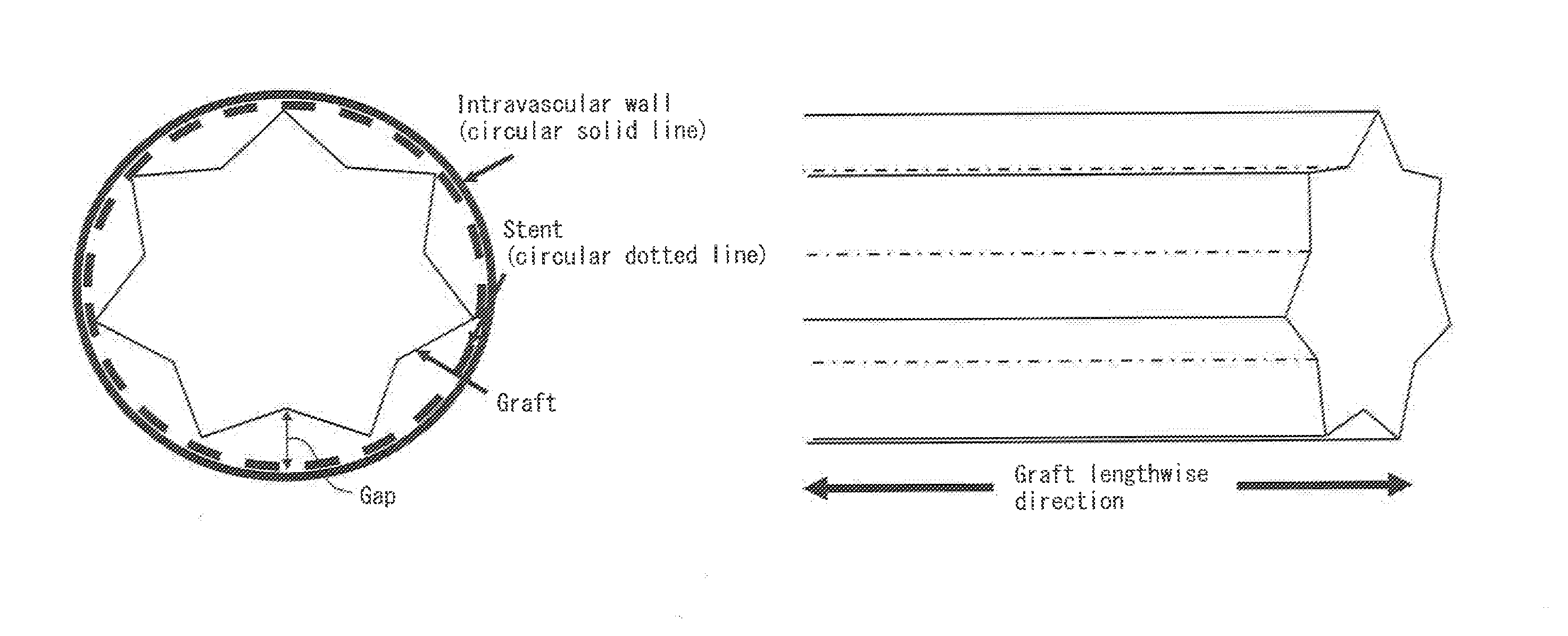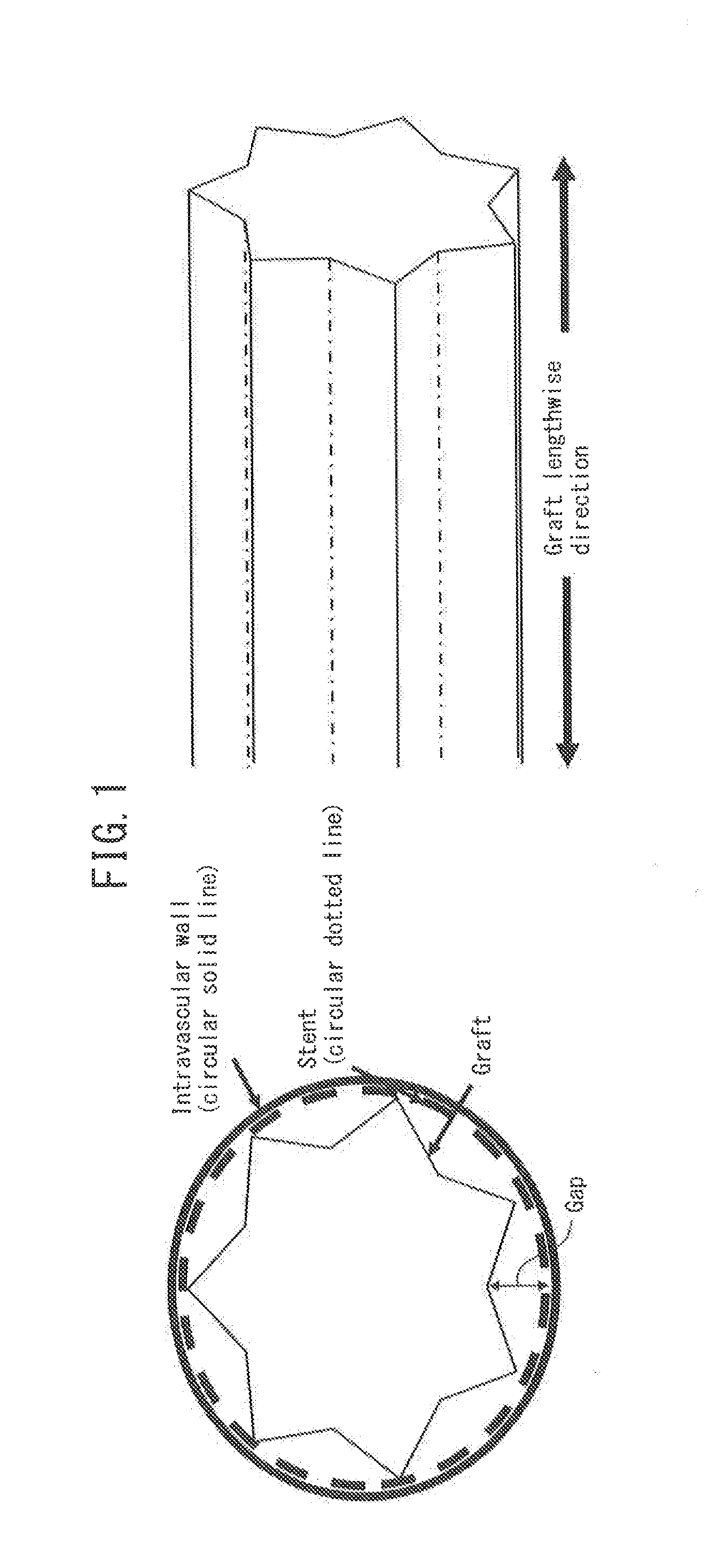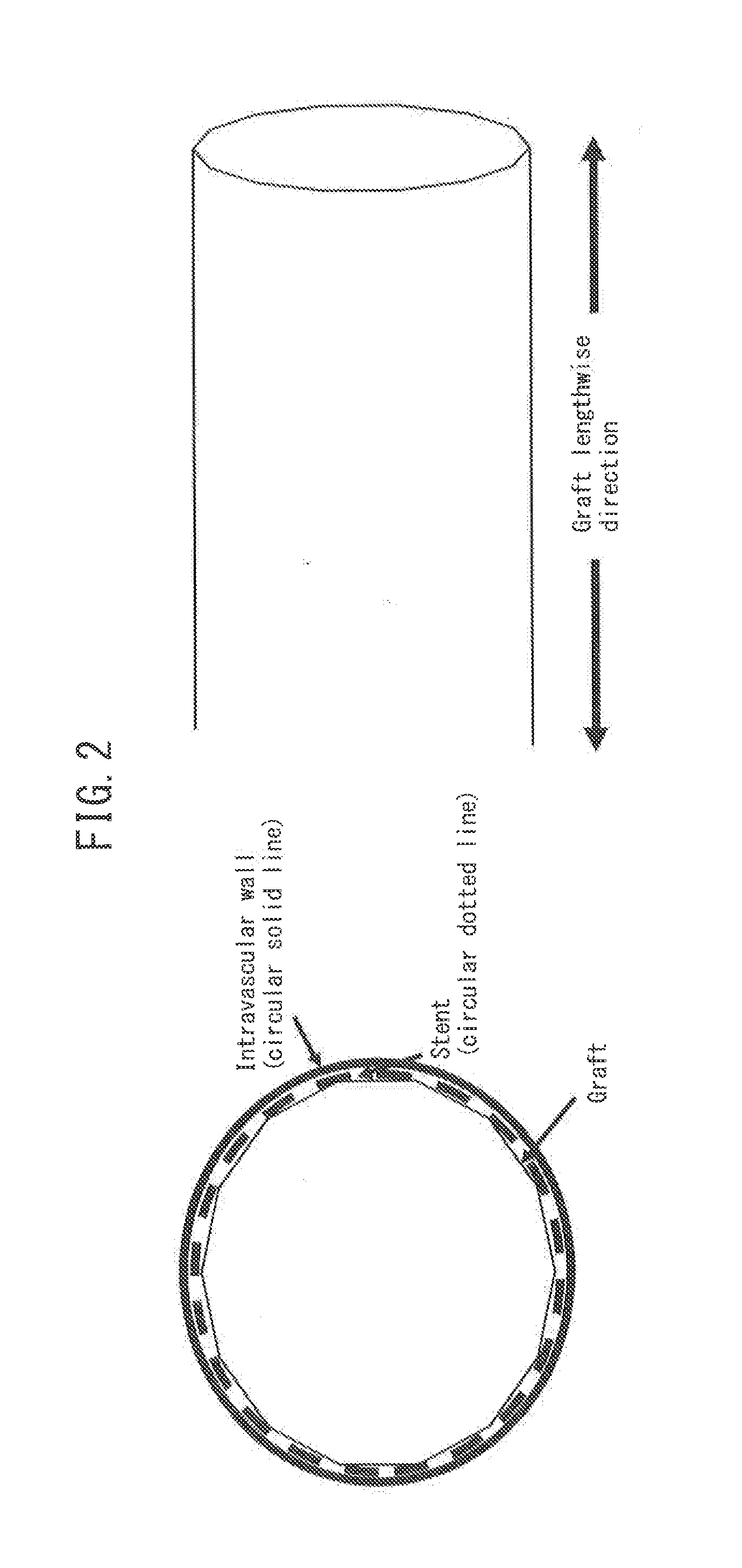Ultrafine polyester fiber
a polyester fiber and stent technology, applied in the field of ultrafine polyester fiber, can solve the problems of reducing the wall thickness of the stent graft fabric, difficult suturing handling, and affecting the stent graft, so as to ensure the necessary biological safety, improve the integration with the stent, and reduce the effect of thermal shrinkag
- Summary
- Abstract
- Description
- Claims
- Application Information
AI Technical Summary
Benefits of technology
Problems solved by technology
Method used
Image
Examples
examples
[0086]The present invention will now be explained in more specific detail, with the understanding that the invention is in no way limited by the following examples. The major values for the physical properties were measured by the following methods.
(1) Reduced Viscosity (ηSp / c)
[0087]The reduced viscosity (ηsp / c) is measured in the following manner.[0088]A dilute solution of 0.35 g of polyethylene terephthalate (PET) sample dissolved in 0.25 deciliter of 1,1,1,3,3,3-hexafluoro-2-propanol (HFIP) is prepared at room temperature.[0089]A Ubbellohde viscosity tube (tube diameter: 0.03) is used to measure the number of seconds of dropping of the dilute solution and HFIP solvent at 25° C., and the relative viscosity (ηsp) is determined.[0090]The relative viscosity (ηsp) is divided by the polymer concentration C (g / dl) and the reduced viscosity ηsp / c is calculated.
(2) Component Content P Other than PET
(a) Content P1 of Residual Components Adhering on Fiber Surface
[0091]After cutting to a len...
reference examples 1 and 2
[0105]Polyethylene terephthalate was used as the starting material, and melt spinning was performed to wind up 29 dtex / 150F unstretched yarn.
[0106]The properties of the PET starting material were as follows.
Reduced viscosity (ηsp / c=dl / g): Listed in Table 1 below.
Titanium content: 2 ppm
Diethylene glycol content: 0.8 wt %
Oligomer content: 1.2 wt %
[0107]The spinneret used was a spinneret having 3 rows with 50 discharge nozzles (hole diameter: 0.08 mmφ) bored in a circumferential manner per circle (each with 50 discharge nozzles) (number of nozzles: 150). Cooling of the yarn was accomplished basically using a cooling air blasting apparatus with an air diffuser at an elevation angle of 37°.
[0108]Spinning was otherwise carried out under the conditions described in Table 1, and 29 dtex unstretched yarn was taken up for 2 hours at 2000 m / min. Wind-up of the unstretched yarn was possible in a stable manner without any particular generation of yarn breakage or the like. The obtained unstretch...
PUM
| Property | Measurement | Unit |
|---|---|---|
| temperature | aaaaa | aaaaa |
| temperature | aaaaa | aaaaa |
| degree of crystallinity | aaaaa | aaaaa |
Abstract
Description
Claims
Application Information
 Login to View More
Login to View More - R&D
- Intellectual Property
- Life Sciences
- Materials
- Tech Scout
- Unparalleled Data Quality
- Higher Quality Content
- 60% Fewer Hallucinations
Browse by: Latest US Patents, China's latest patents, Technical Efficacy Thesaurus, Application Domain, Technology Topic, Popular Technical Reports.
© 2025 PatSnap. All rights reserved.Legal|Privacy policy|Modern Slavery Act Transparency Statement|Sitemap|About US| Contact US: help@patsnap.com



